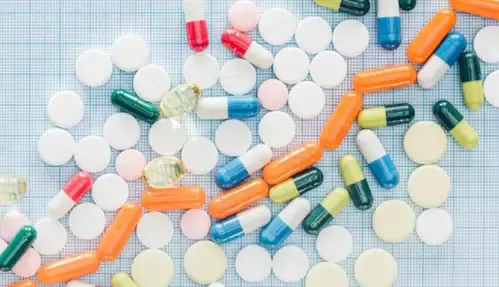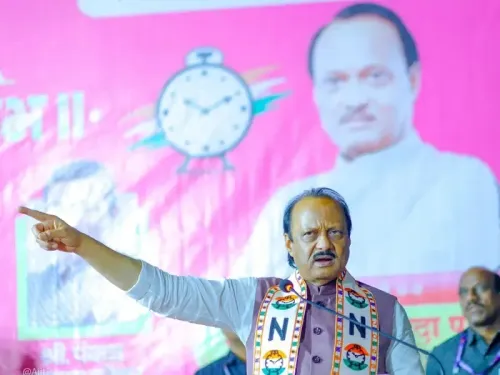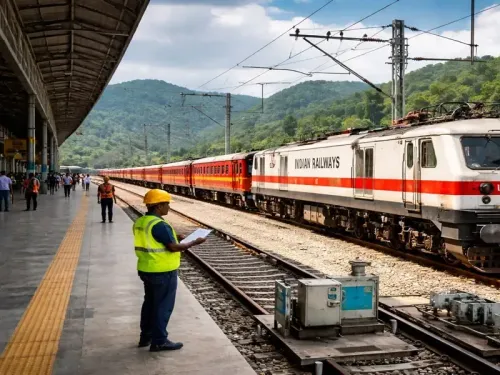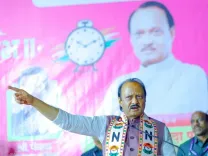How Did India's Pharma Exports Surge by 92% in Six Years?

Synopsis
Key Takeaways
- India's pharma exports surged by 92% in six years.
- Government schemes promote innovation and research.
- Pradhan Mantri Bhartiya Janaushadhi Pariyojana enhances affordability.
- Over 16,912 Jan Aushadhi Kendras established nationwide.
- Estimated savings of Rs 38,000 crore for citizens.
New Delhi, July 25 (NationPress) The implementation of various initiatives by the Centre aimed at achieving the vision of Aatmanirbhar Bharat in the pharmaceutical sector has led to a remarkable 92% increase in India's drug and pharmaceutical exports, soaring from Rs 1,28,028 crore in FY2018-19 to Rs 2,45,962 crore by FY2024-25, as reported to Parliament on Friday.
These initiatives include the Promotion of Research and Innovation in Pharma MedTech Sector (PRIP) scheme, the Production Linked Incentive (PLI) Scheme for Pharmaceuticals, the PLI Scheme for Bulk Drugs, the Scheme for Promotion of Bulk Drug Parks, and the Strengthening of Pharmaceutical Industry scheme, as detailed by Minister of State for Chemicals and Fertilisers Anupriya Patel in a written response to a question in the Lok Sabha.
The PRIP scheme, launched with a budget of Rs 5,000 crore, aims to transform India's Pharma MedTech sector from a cost-based to an innovation-driven growth model by enhancing research and fostering industry-academia collaborations in drug discovery and medical device development. Under this initiative, seven Centres of Excellence (CoEs) have been established.
The PLI Scheme for Pharmaceuticals is designed to boost India's manufacturing capabilities through increased investment and production, thereby contributing to a diversification of high-value pharmaceutical products.
The minister highlighted that this scheme has successfully attracted enhanced investment and production in eligible products. As of March 2025, the targeted committed investment of Rs 17,275 crore over the six-year duration has been significantly exceeded, with a cumulative investment of Rs 37,306 crore achieved by the scheme's third year, yielding cumulative sales of approved products worth Rs 2,66,528 crore, which includes exports totaling Rs 1,70,807 crore.
Furthermore, the PLI Scheme for Bulk Drugs, which has a total budget allocation of Rs 6,940 crore, aims to mitigate disruptions in the supply of critical active pharmaceutical ingredients (APIs) essential for manufacturing key drugs with no alternatives. This initiative seeks to reduce the risk of supply interruptions caused by over-reliance on a single source. As of March 2025, the committed investment of Rs 3,938.5 crore under approved projects has been notably surpassed, with a cumulative investment of Rs 4,570 crore realized by the scheme's third year, the minister further elaborated.
Additionally, the government has launched the Pradhan Mantri Bhartiya Janaushadhi Pariyojana scheme to ensure that quality generic medicines are accessible at affordable prices. This initiative has seen the establishment of dedicated outlets called Jan Aushadhi Kendras (JAKs) nationwide, providing medicines at prices that are approximately 50% to 80% lower than those of leading branded alternatives. As of June 6, 2025, a total of 16,912 JAKs have been set up, serving an average of 10 to 12 lakh visitors daily who benefit from affordable quality medications. The scheme offers 2,110 medications and 315 surgical and medical consumables, covering major therapeutic categories including cardiovascular, anti-cancer, anti-diabetic, anti-infectives, anti-allergic, and gastrointestinal medicines, as well as nutraceuticals.
As a result of this initiative, over the past 11 years, citizens have reportedly saved around Rs 38,000 crore compared to branded medicine prices. Furthermore, the scheme has generated self-employment opportunities for over 16,000 individuals, including more than 6,800 women entrepreneurs, the minister added.










